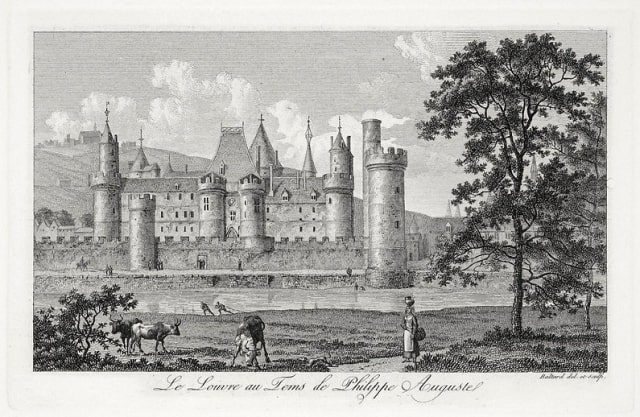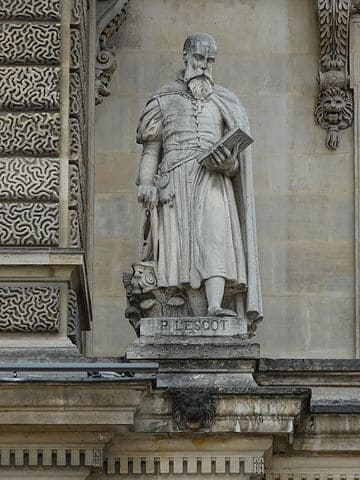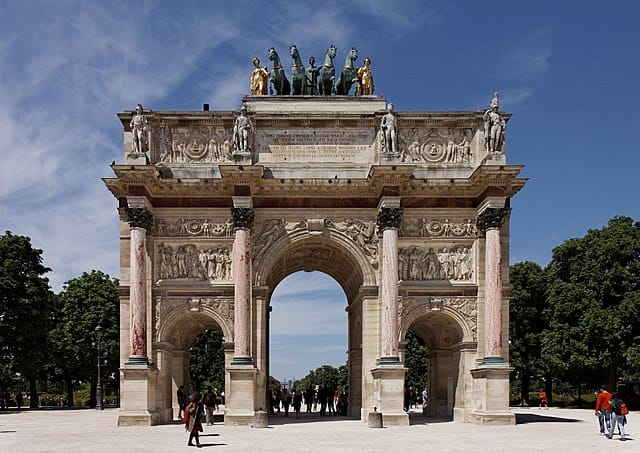Everything You Need to Know About the Architects of the Louvre
The Louvre Museum in Paris is not only one of the French capital’s most visited monuments, it’s the most visited museum in the world! It should come as no surprise, especially with famous pieces like the Mona Lisa and the Venus de Milo that call this musée home.
The Louvre was originally erected as a fortress in the 12th century in order to protect Paris from invading troops. Then, it was made into a royal palace which housed the king, queen and the rest of the royal family and it’s court. Eventually, the royal family ditched the Louvre to live at Versailles…and the structure was made into a museum!
There are many architects that made the Louvre into what it is today. I’m going to be focusing on the five most important. Keep reading to learn everything you need to know about the architects of the Louvre!
Practical Information for visiting the Louvre:
Entry fee: 15-17 euros
Opening hours: Every day except Tuesday 9am-6pm, Wednesday & Friday until 9:45pm
Address: Rue de Rivoli, 75001 Paris
Metro station: Palais-Royal Musée du Louvre / Pyramides
Website
The Louvre fortress of the Middle Ages
Before I jump into the architects of the Louvre, I want to give you a bit of background information on what the Louvre was originally built for. A little bit of history never hurt anyone!
In 1190, the French King Philip II Auguste was about to leave Paris to embark on the Third Crusade. He didn’t want to leave his city without making sure that it would be protected from invaders, especially from the northwest.
King Philip II Auguste knew that the city’s weakest point was where the Seine River meets the Right Bank. There was already a wall surrounding Paris, but King Philip wanted to make sure that his subjects had extra protection. Enter: the Louvre Fortress!
Today, you can still find remnants of the fortress in the lower level of the Louvre Museum. You’ll also find various archeological discoveries from the original fortress. If you’re interested in checking out these discoveries for yourself, head to the Medieval Louvre exhibit in the Sully Wing!
Pierre Lescot : the Renaissance architect
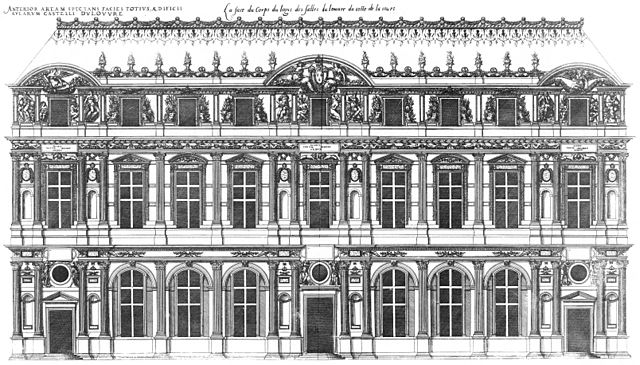
Engraving from Le premier volume des plus excellents Bastiments de France by Jacques I Androuet du Cerceau, showing the the court facade of the Lescot Wing of the Louvre Palace – WikiCommons
Fast forward to the 16th century and the Renaissance. The French King François I had just returned to France after being held captive in Spain. King François had already set up camp at the Château de Fontainebleau, located 55 kilometres Southeast of Paris, but he also wanted to modernize the Louvre.
King François I enlisted the help of an architect named Pierre Lescot. Lescot was known for the excellent work he had already done on several different castles in the Loire Valley, and so King François I knew that he was in good hands.
Lescot was tasked with turning the Louvre into a Renaissance style palace. He worked alongside a sculptor named Jean Goujon. The work was briefly interrupted when King François I died in 1547, but King Henry II ordered that the work continue in 1549.
Lescot began by demolishing the west wing of the Louvre and rebuilding it to house King Henry II’s bedroom. This wing in the modern day Louvre is named for the architect and is known as the Lescot Wing. He also installed the Salle des Caryatides, which included several sculptures of “caryatids,” which is a type of sculpture made to look like the female figure.
Two more kings (François II and Charles IX) came and went, but Lescot remained the head architect for the Louvre. He demolished the south wing and installed an exact replica of the Lescot Wing. Before all remodelling stopped because of the Wars of Religion in the late 1560s, Lescot also designed Petite Galerie, which ran from the southwest section of the Louvre to the Seine River.
Jacques Lemercier, Louis Le Vau and the Petit Conseil : the architects of the 17th and 18th centuries
King Louis XIII was in charge in the early 17th century, and he decided to commission some work on the Louvre himself. He enlisted the help of an architect named Jacques Lemercier. Lemercier was a member of a group of three architects (Louis Le Vau and François Mansart were the others) that helped to popularize the French Baroque style. French Baroque style would also go on to be associated with King Louis XIII!
Lemercier helped to expand the Lescot Wing to the north. He added a central pavilion, which was originally called the Sully Pavilion, but was renamed the Pavillon de l’Horloge when a clock was added in 1857. Horloge means clock in French!
Later, in 1659, King Louis XIV decided to do some improvements on the Louvre, too. He hired Louis Le Vau (who worked alongside Lemercier!) to make improvements on the Tuileries Palace. The Tuileries Palace was originally commissioned by Catherine de’ Medici and sat to the west of the Louvre.
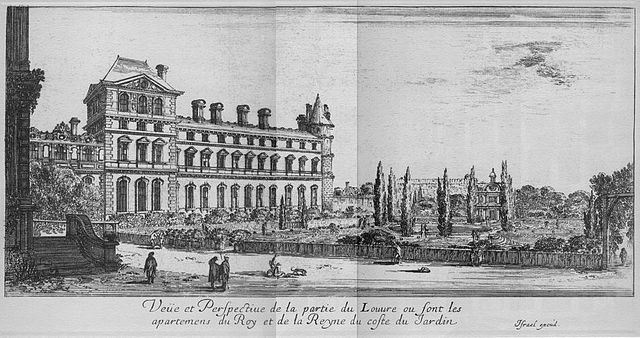
South facade with the Pavillon du Roi on the left and the southeast tower of the old Louvre on the right by Israël Silvestre – WikiCommons
Le Vau remodelled the Tuileries Palace, he oversaw the completion of the north wing of the Louvre, and he also expanded the south wing. He decorated the Pavillon du Roi, and he created the Grand Cabinet du Roi. He worked closely with the famous French painter Charles Le Brun.
In 1668, King Louis XIV hired a group of three architects that went by the name the Petit Conseil. The trio included Le Vau, Le Brun and Claude Perrault, and they designed the east façade of the Louvre, which would go on to become (and remain!) the most distinctive feature of the building. The façade is called the Louvre Colonnade.
Charles Percier : Napoleon’s architect
If you know anything about French history, then you’ve most definitely heard of a man named Napoleon Bonaparte. Honestly, if you know anything about history in general you’ve probably heard of him!
Napoleon wanted to build yet another monument that celebrated his military accomplishments, and he decided that he wanted it to be in the middle of the Louvre complex. He commissioned an architect named Charles Percier to create the monument, in the form of an arch. The arch still stands today and is called the Arc de Triomphe du Carrousel.
The arch is a miniature version of the Arc de Triomphe just a few kilometres away. It was built between 1806 and 1808, and celebrates Napoleon’s military victories from 1805. The Arc de Triomphe du Carrousel and the Arc de Triomphe were designed the same year, but the Arc de Triomphe was not completed until 1836.
I should mention that with the Paris Commune of 1871, the Tuileries Palace was destroyed by angry “Communards” who set the building on fire. The Tuileries Palace was completely destroyed and the Richelieu Library of the Louvre was also destroyed. In the coming years, the Louvre was restored and added onto to become the museum that you see today!
I.M. Pei: architect of the glass pyramid
The most recent addition to the Louvre is of course the massive glass pyramid that sits outside the museum, and also serves as an entrance. It was commissioned by French president François Mitterrand, and was designed by the American architect I.M. Pei.
In the early 1980s, there were still government offices located inside the Louvre. President Mitterrand wanted to give the museum a facelift, and he also wanted to move the offices out of the complex to make more room for art. Enter: Pei and his pyramid!
The pyramid that you see from the outside was opened to the public in 1989, and the inverted pyramid that you see on the inside of the museum was opened in 1993.
Like so many things in Paris (like the Eiffel Tower, for example!), Parisians did not like the new modern design. But, as more time has gone on, Paris residents have grown to love the pyramid and it has become a symbol of the city.
Conclusion
Did you know that the Louvre was so old? Did you know that it was designed by multiple architects?! Well, now you do! I hope you’ve enjoyed this brief history lesson on the most famous architects behind the Louvre!
It should be noted that I haven’t included all of the architects that played a part in designing the Louvre. With nearly 850 years to cover, I hope you don’t blame me!
If you’d like to learn more about the Louvre and what you can find inside it, I definitely recommend that you join one of our walking tours in the city! Click here to learn more and make your booking!
Planning a trip to Paris ? Get ready !
These are Amazon’s best-selling travel products that you may need for coming to Paris.
Bookstore
- The best travel book : Rick Steves – Paris 2023 – Learn more here
- Fodor’s Paris 2024 – Learn more here
Travel Gear
- Venture Pal Lightweight Backpack – Learn more here
- Samsonite Winfield 2 28″ Luggage – Learn more here
- Swig Savvy’s Stainless Steel Insulated Water Bottle – Learn more here
Check Amazon’s best-seller list for the most popular travel accessories. We sometimes read this list just to find out what new travel products people are buying.





